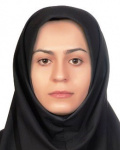| نویسندگان | آزاده تیموری,الهه محمودی خالدی,الهه سید حسینی |
|---|
| نشریه | BMC Complementary Medicine and Therapies |
|---|
| ضریب تاثیر (IF) | ثبت نشده |
|---|
| نوع مقاله | Full Paper |
|---|
| تاریخ انتشار | 2025-04-10 |
|---|
| رتبه نشریه | علمی - پژوهشی |
|---|
| نوع نشریه | الکترونیکی |
|---|
| کشور محل چاپ | ایران |
|---|
| نمایه نشریه | JCR ,SCOPUS |
|---|
چکیده مقاله
Saffron and Eryngium honeys are unique types of monofloral honeys collected from eastern and center of Iran. In present study, first, we investigated melissopalynological and physicochemical parameters in honey samples. Then we extracted the phenolic compounds and evaluated in vitro antioxidant by FRAP assay and anti-inflammatory activities by lipopolysaccharide induced Raw 264.7 macrophage cells. Phenolic extracts reduced nitric oxide and the secretion of the inflammatory cytokines IL-6 and TNFSF9 in the inflamed cells, and by reducing the NF-kB and increasing Nrf2 gene expression, showed an anti-inflammatory effect, but in general, Eryngium honey showed higher anti-inflammatory properties. Also, by studying the expression of Bcl-2, Bax and HO-1 genes, we showed that there is a relationship between inflammation and apoptosis in macrophage cells that the phenolic compounds showed their anti-apoptotic properties. Eryngium honey had a better performance in anti-apoptotic properties. Moreover, promising results indicate that Iranian honeys could be an important source of phenolic compounds presenting antioxidant and anti-inflammatory activity, which can have health-promoting properties if included in the diet and medicine.
